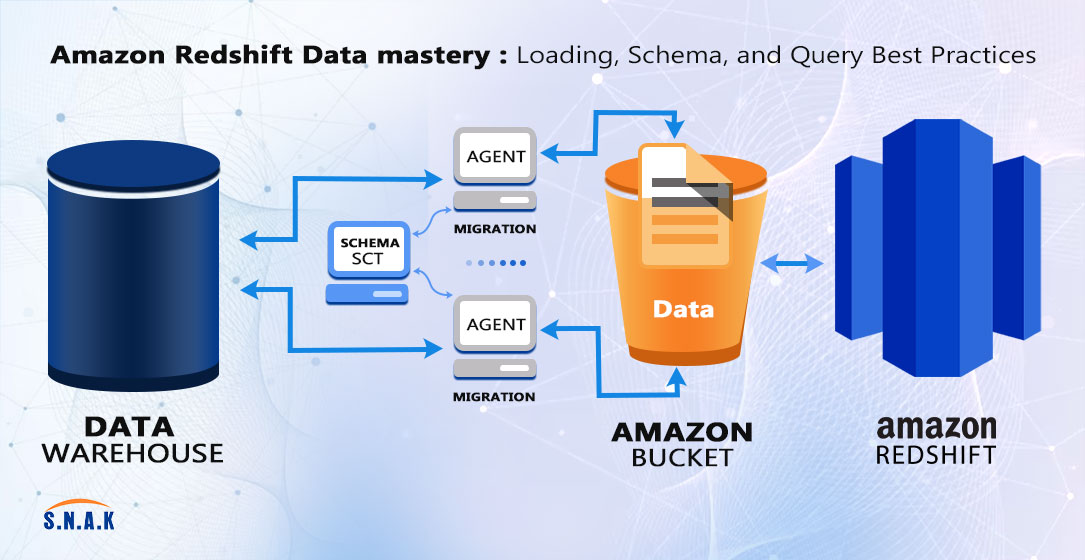January 4, 2024 | SNAK Consultancy
Share on :
Amazon Redshift Data Mastery: Loading, Schema, and Query Best Practices

In data analytics, achieving mastery in Amazon Redshift requires a comprehensive understanding of the intricate interplay between data loading, schema design, and query optimization. This blog serves as your guide to navigating the intricate landscape of Redshift, focusing on best practices that ensure effective data mastery.
Mastering Data Loading
(A) Streamlining Data Ingestion: Efficient data loading is the keystone to unlocking the potential of Amazon Redshift. Discover streamlined strategies for data ingestion, including the optimal use of the COPY command, leveraging data migration tools, and embracing real-time streaming for a continuous flow of information.
(B) Handling Large Datasets with Finesse: As datasets burgeon, handling large volumes of data becomes a challenge. Uncover best practices for managing and loading massive datasets into Amazon Redshift, ensuring scalability and performance remain uncompromised.
Crafting Intelligent Schema Designs
(A) Design Principles for Performance: A well-crafted schema is the bedrock for efficient queries. Dive into design principles, explore distribution styles, sort keys, and learn how to create table schemas that optimize performance and empower seamless data analysis.
(B) Adaptive Schema Evolution: In a dynamic data landscape, business needs evolve. Learn strategies for schema evolution, ensuring your schema adapts to changing data requirements without sacrificing efficiency. Navigate versioning, maintain backward compatibility, and execute seamless schema updates.
Navigating Query Optimization
(A) Fine-Tuning Queries for Precision: Optimizing queries is an art that elevates analytics. Explore query-tuning strategies, understand the nuances of query execution plans, and implement advanced optimization techniques that enhance query performance, fostering efficient and timely data analysis.
(B) Real-Time Monitoring and Analysis: A well-monitored data environment is a high-performing one. Discover tools and techniques for real-time monitoring and analysis in Amazon Redshift. Identify bottlenecks, optimize resource utilization, and ensure your queries run seamlessly for uninterrupted data insights.
Questionnaire
Conclusion :
As we conclude this exploration of data mastery in Amazon Redshift, you are now armed with the knowledge and best practices necessary to propel your data analytics initiatives to new heights. The seamless integration of data loading, schema design, and query optimization lays the foundation for informed decision-making and business growth.
Embrace the art of data mastery, leveraging Amazon Redshift as your catalyst for innovation. This blog serves as your compass, guiding you toward a future of continuous improvement and excellence in the realm of data analytics.